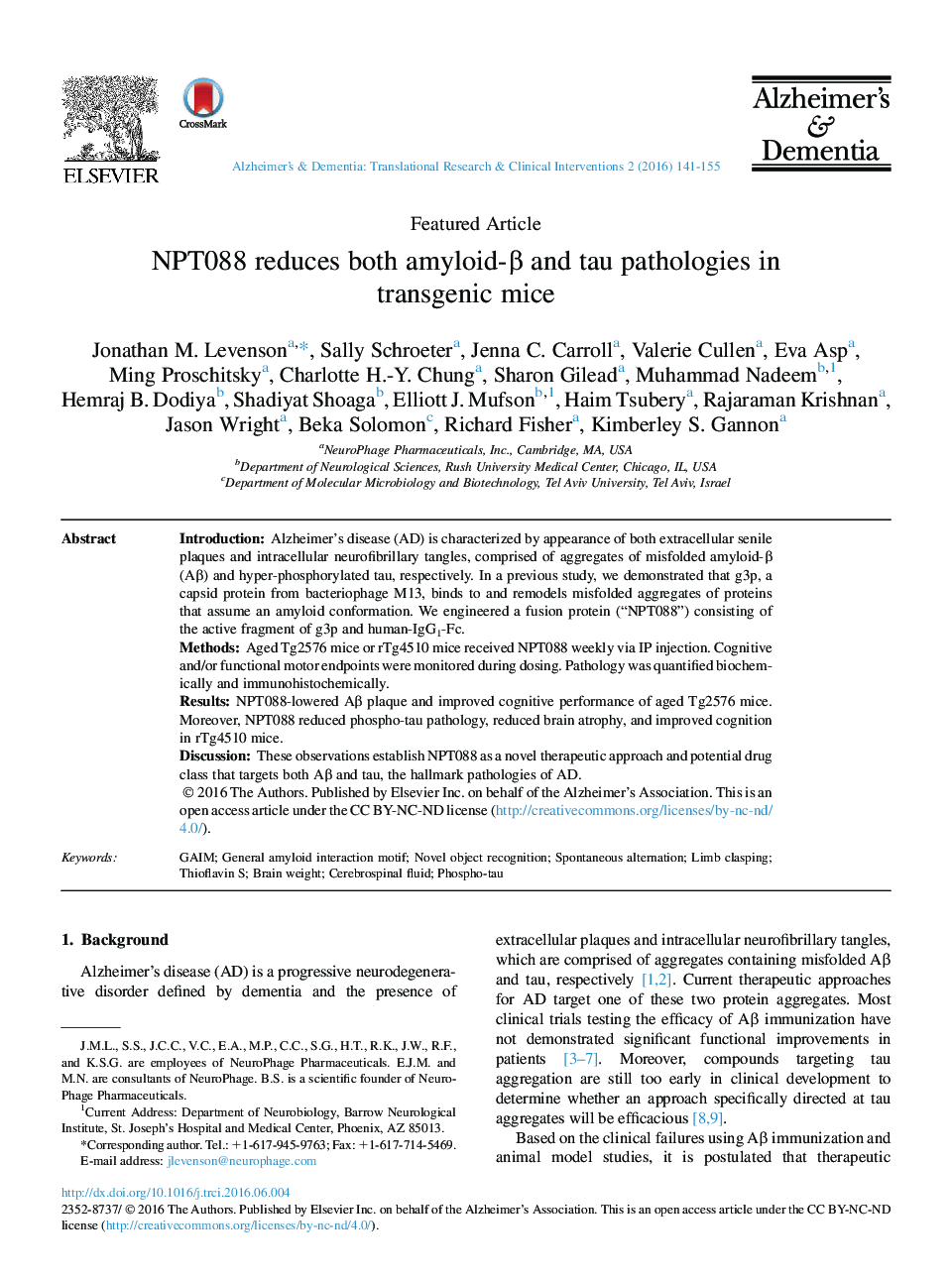| Article ID | Journal | Published Year | Pages | File Type |
|---|---|---|---|---|
| 3032075 | Alzheimer's & Dementia: Translational Research & Clinical Interventions | 2016 | 15 Pages |
•NPT088 binds to and remodels misfolded aggregates of both Aβ and tau.•Systemic administration of NPT088 improves cognition, reduces levels of Aβ42 and lowers fibrillar Aβ plaque in aged Tg2576 hAPP mice.•NPT088 does not increase levels of Aβ in CSF.•Systemic administration of NPT088 improves cognition, improves motor function, reduces phospho-tau and reduces brain atrophy in rTg4510 tau mice.
IntroductionAlzheimer's disease (AD) is characterized by appearance of both extracellular senile plaques and intracellular neurofibrillary tangles, comprised of aggregates of misfolded amyloid-β (Aβ) and hyper-phosphorylated tau, respectively. In a previous study, we demonstrated that g3p, a capsid protein from bacteriophage M13, binds to and remodels misfolded aggregates of proteins that assume an amyloid conformation. We engineered a fusion protein (“NPT088”) consisting of the active fragment of g3p and human-IgG1-Fc.MethodsAged Tg2576 mice or rTg4510 mice received NPT088 weekly via IP injection. Cognitive and/or functional motor endpoints were monitored during dosing. Pathology was quantified biochemically and immunohistochemically.ResultsNPT088-lowered Aβ plaque and improved cognitive performance of aged Tg2576 mice. Moreover, NPT088 reduced phospho-tau pathology, reduced brain atrophy, and improved cognition in rTg4510 mice.DiscussionThese observations establish NPT088 as a novel therapeutic approach and potential drug class that targets both Aβ and tau, the hallmark pathologies of AD.
